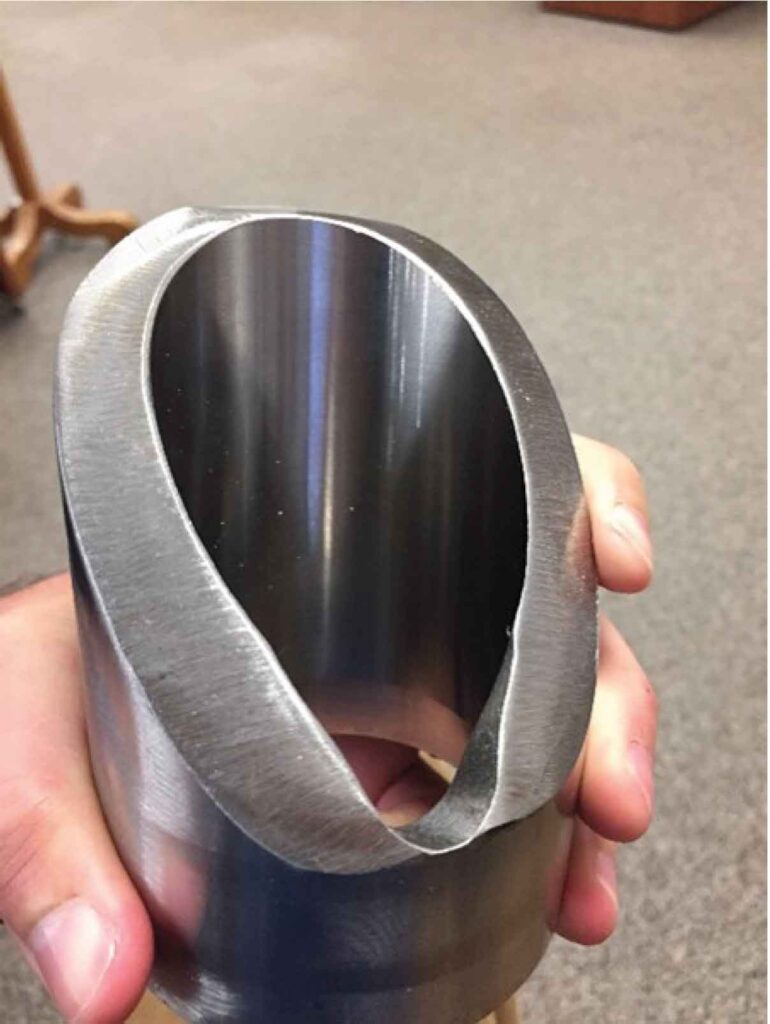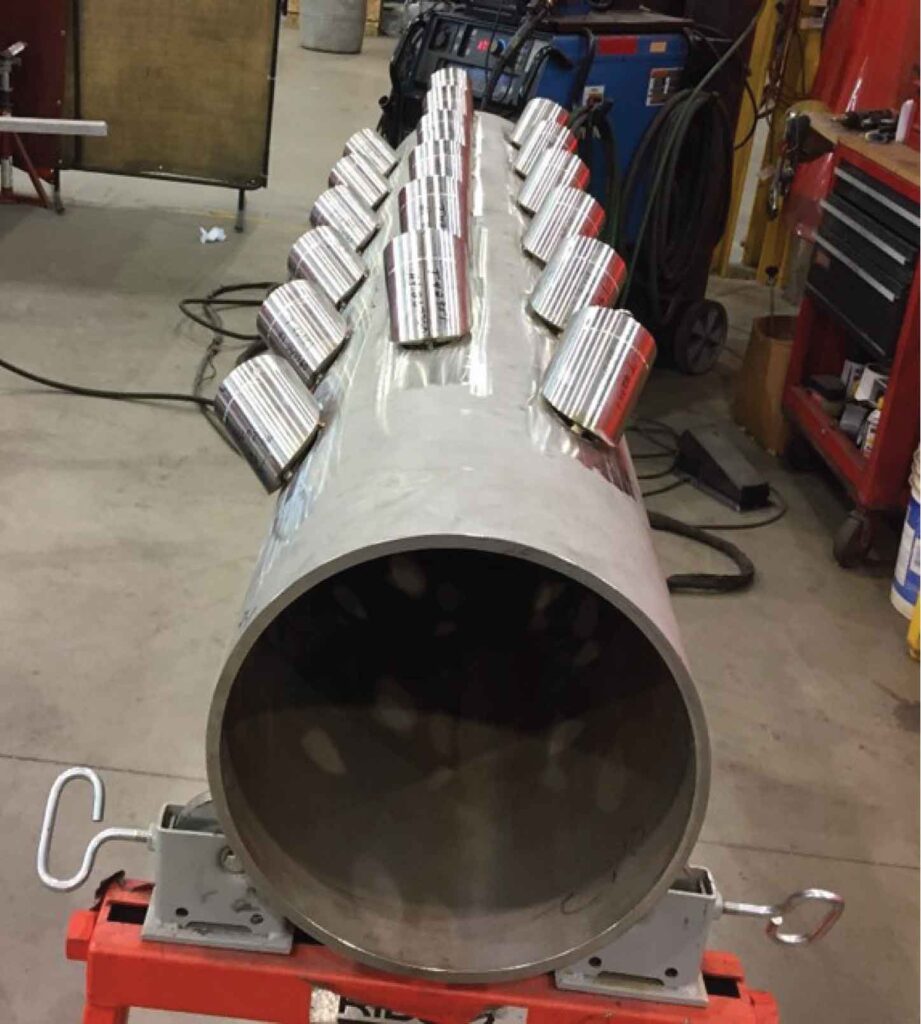Case Study
Overcoming Welding Challenges on Condenser Manifold


Project Summary
Project Details:
Site / Location: USA
Scope of Work:
Fabricate condenser manifold Design tooling Install temporary attachments to prevent distortion Inspect internal welds via borescope for acceptance
Basic Equipment:
Shell diameter: 12”
Manifold length: 66”
No. of latrolets: 18
Design code: B31.1
Shell mat.: A312 TP304
The complicated nozzle angles on the condenser manifold required engineering ingenuity
The condenser in a nuclear power plant turns the steam, that is used to generate power via a turbine, back into water (condensate) to be reused in the plant. A major part of the condenser is the condenser manifold which acts as a sparger to facilitate the cooling of the condensate. The condenser manifold consists of multiple drain branches (latrolets) which connect to the body of the manifold at complex angles (often 45°).
A North American nuclear plant needed to replace their existing condenser manifold and was having trouble finding a fabrication company to be able to handle the difficult welding between the latrolets and the main shell. Due to the 45° angle on the latrolets they and the shell are prone to warping and distortion during the welding process. This would result in misalignment when installing the manifold into the plant.
Energy Steel engineers devised a series tooling and temporary attachments to ensure that the welded latrolets and shell would not distort during the welding process. This included attaching each of the latrolets together in rows and using non-welded attachments on the inside of the shell. A series of test welds were carried out to prove the process prior to welding.
All these steps resulted in the condenser manifold being made without any distortion and ultimately no reconfiguration being needed when installing at the plant.